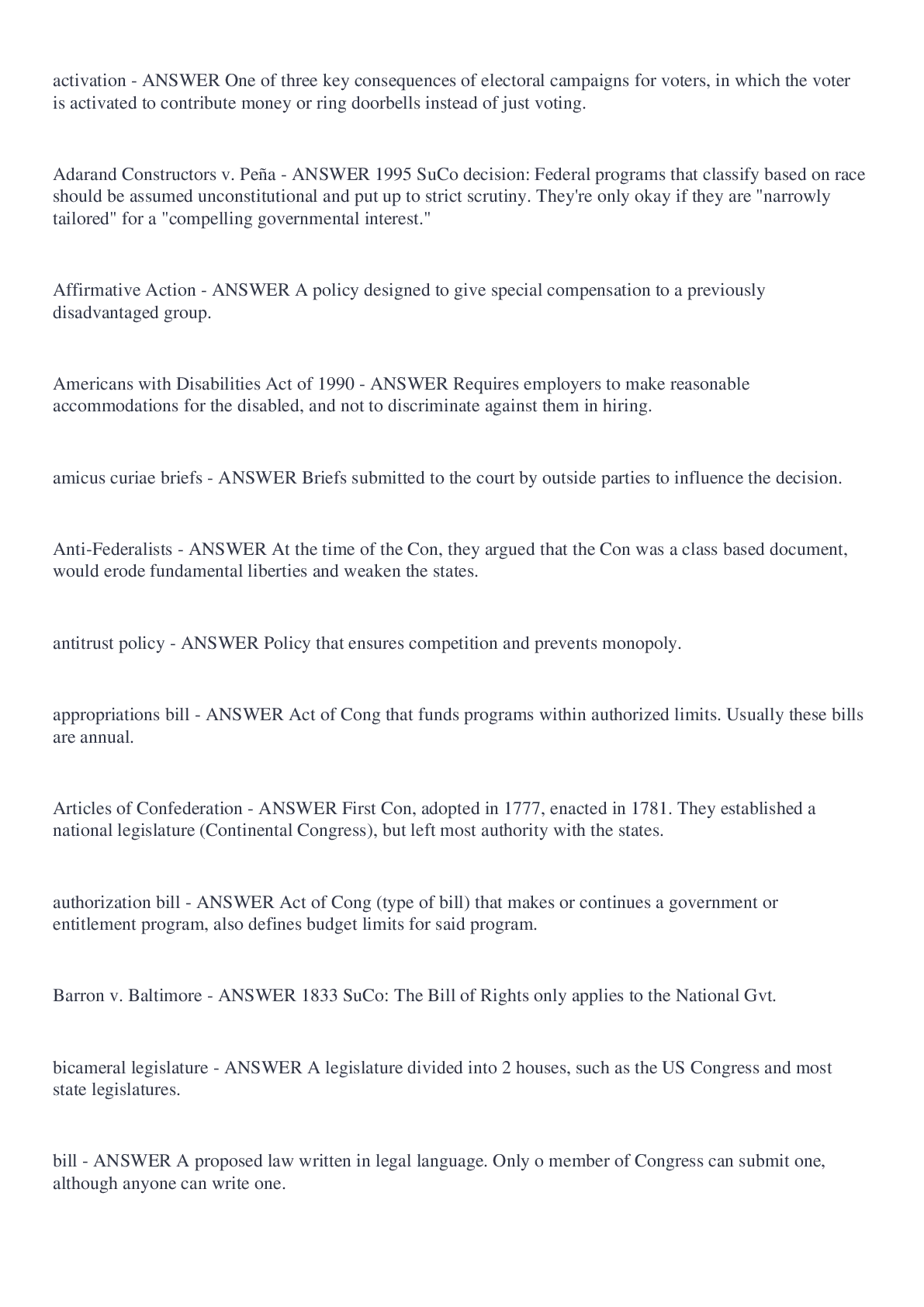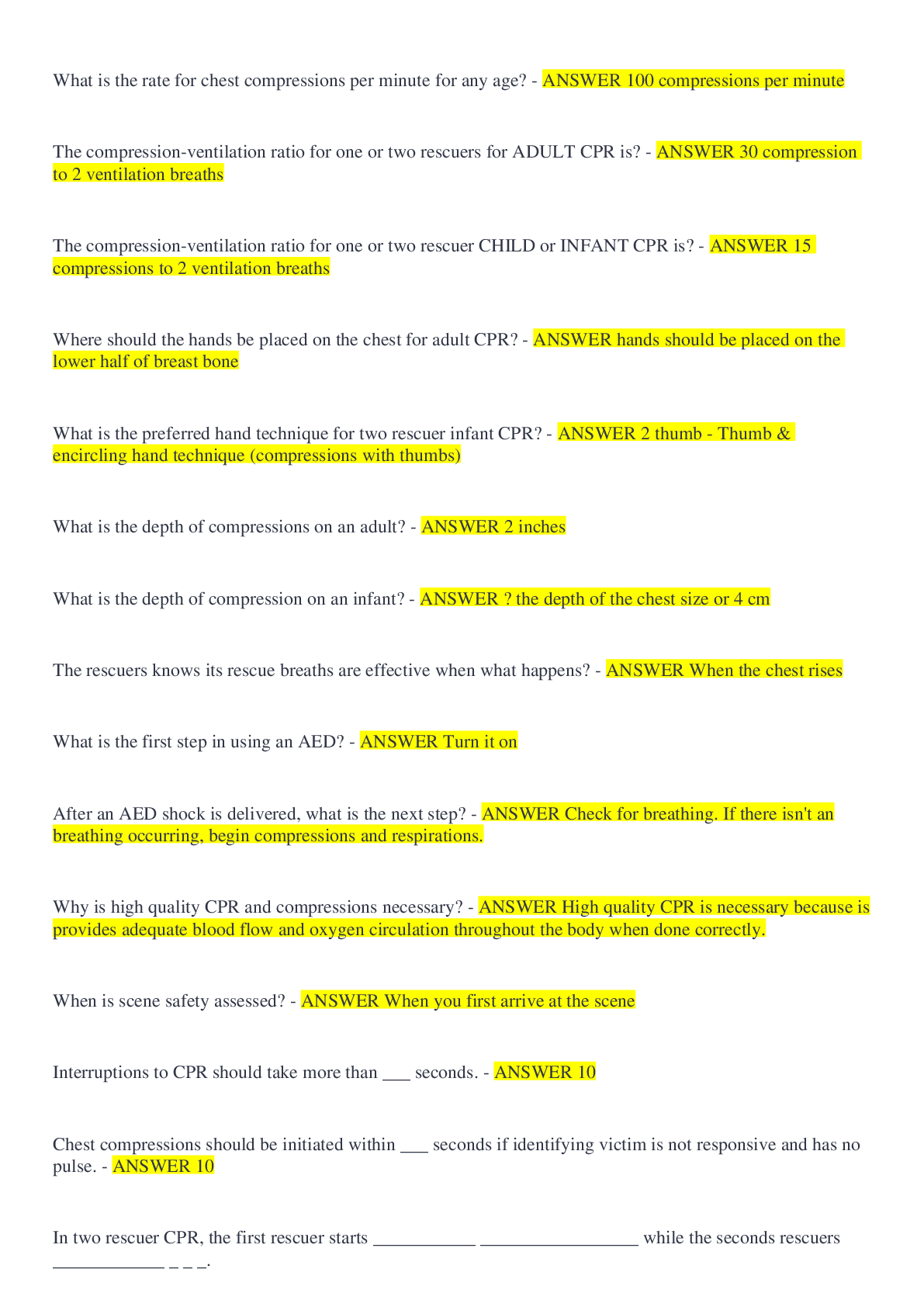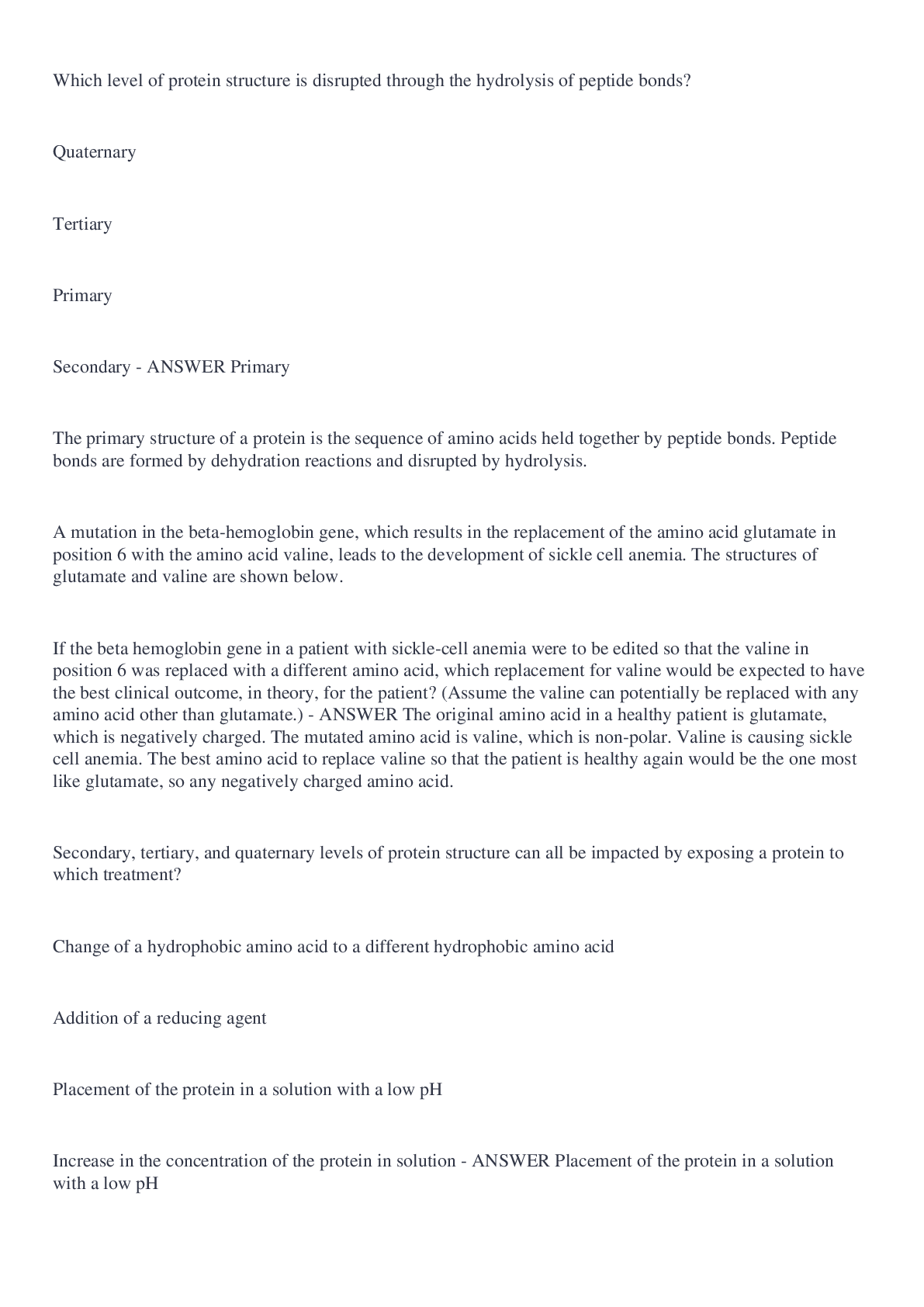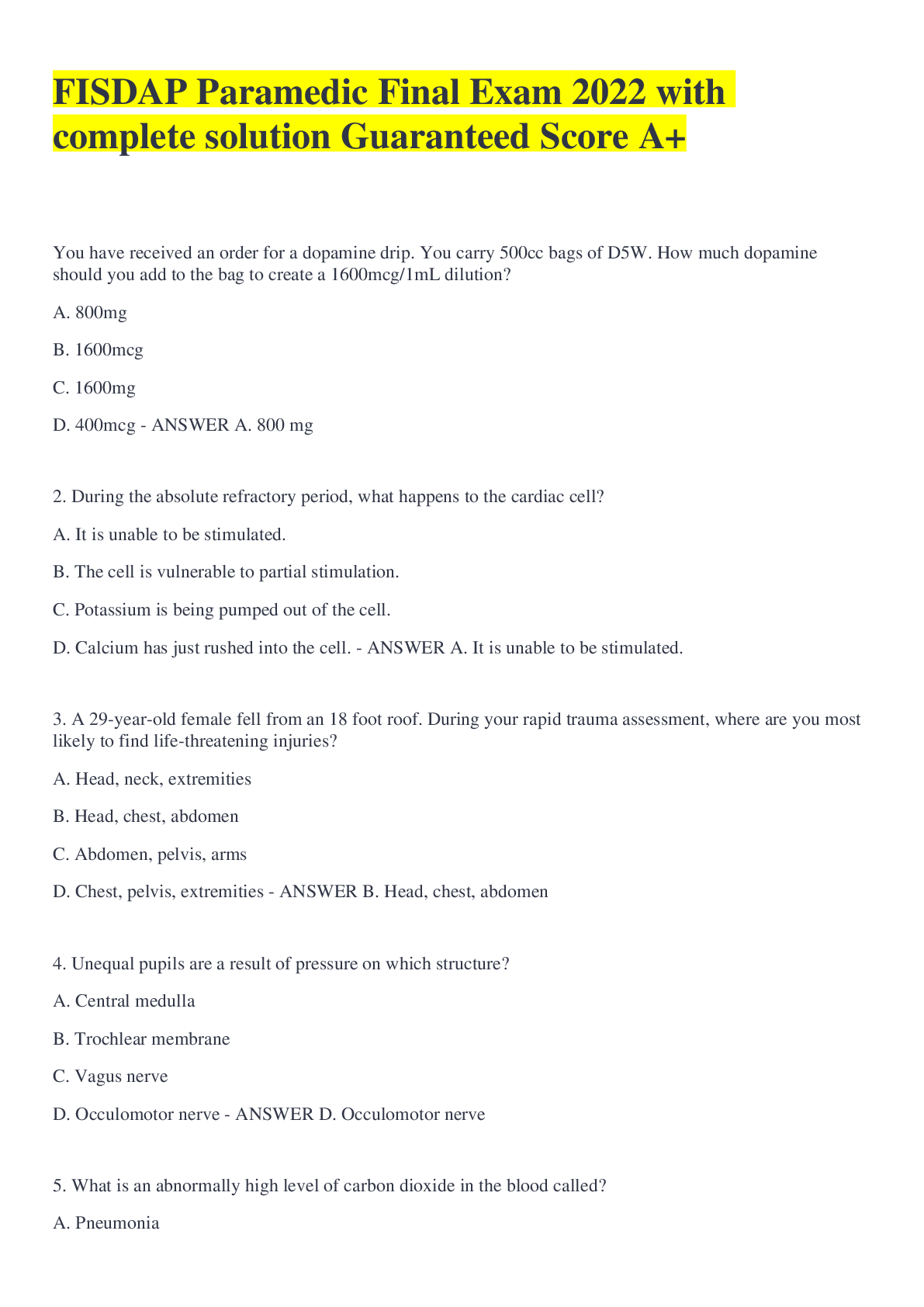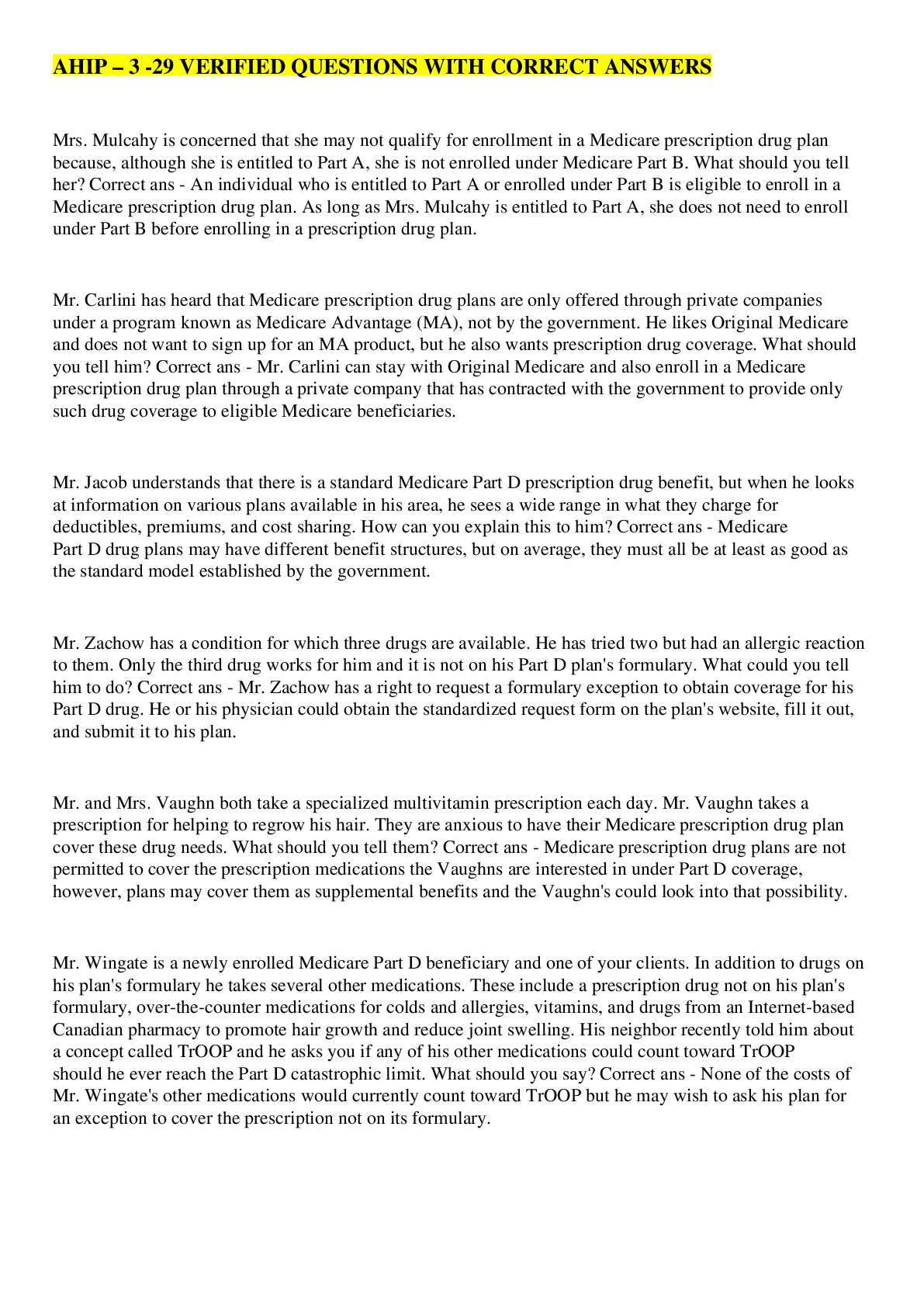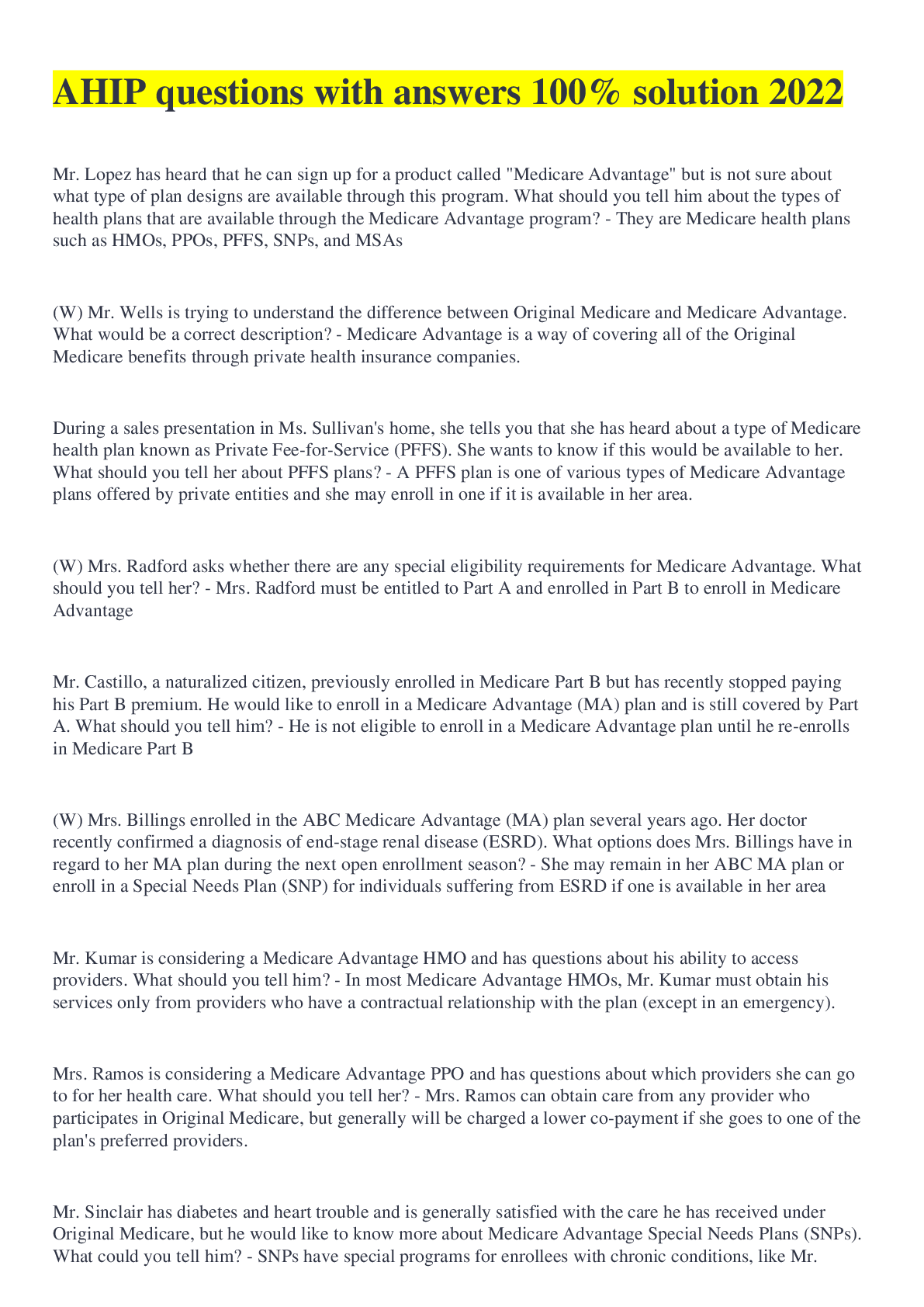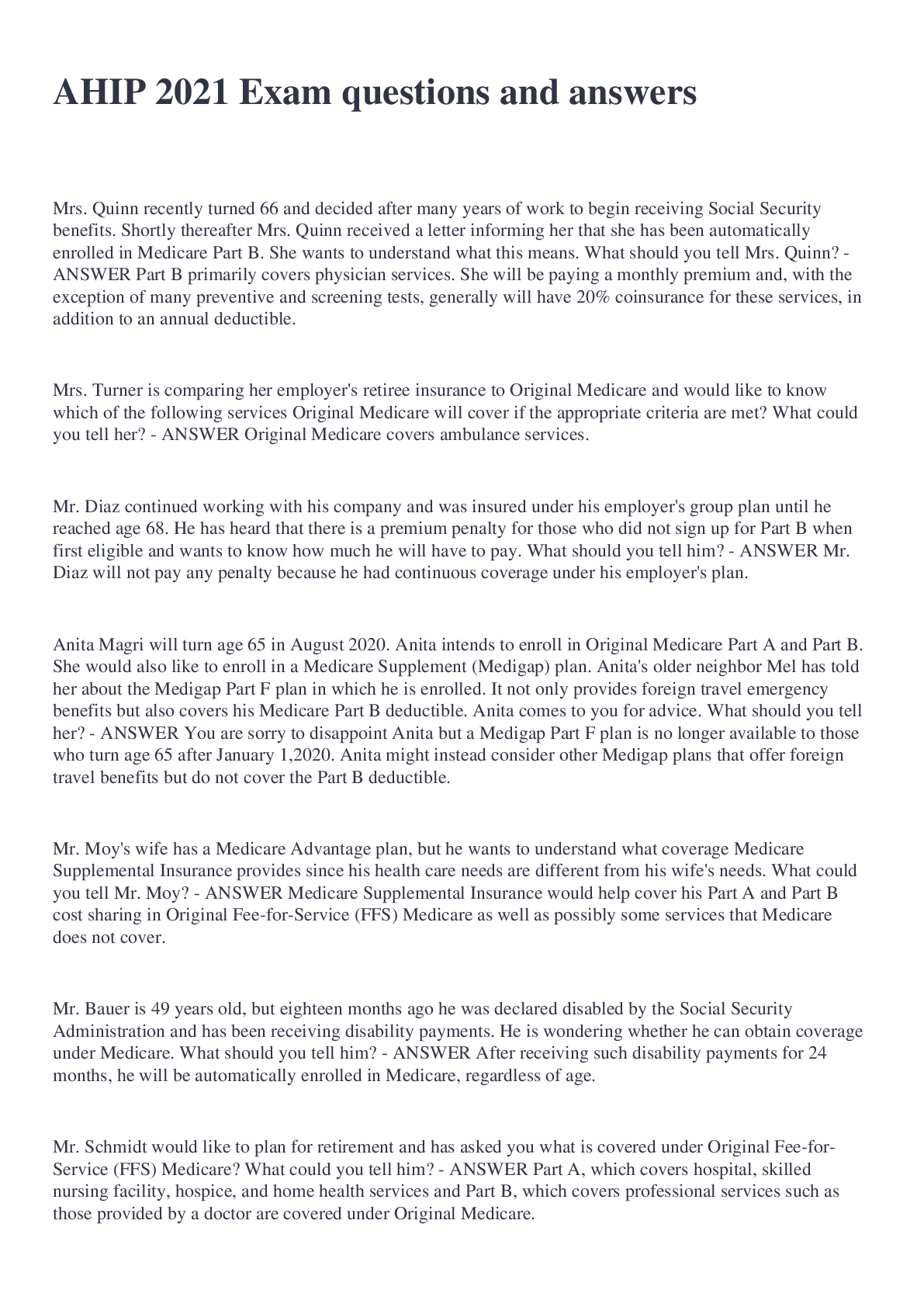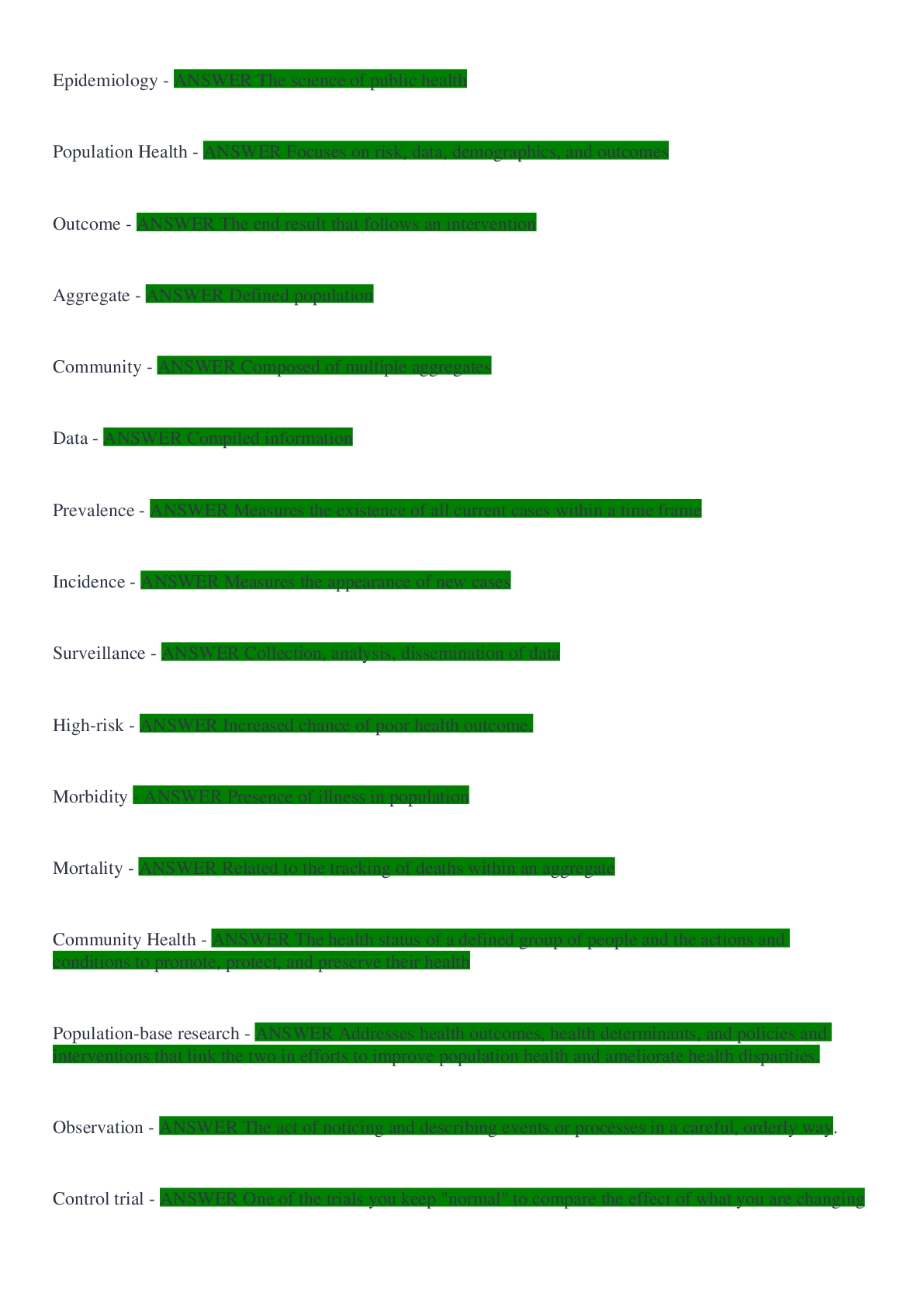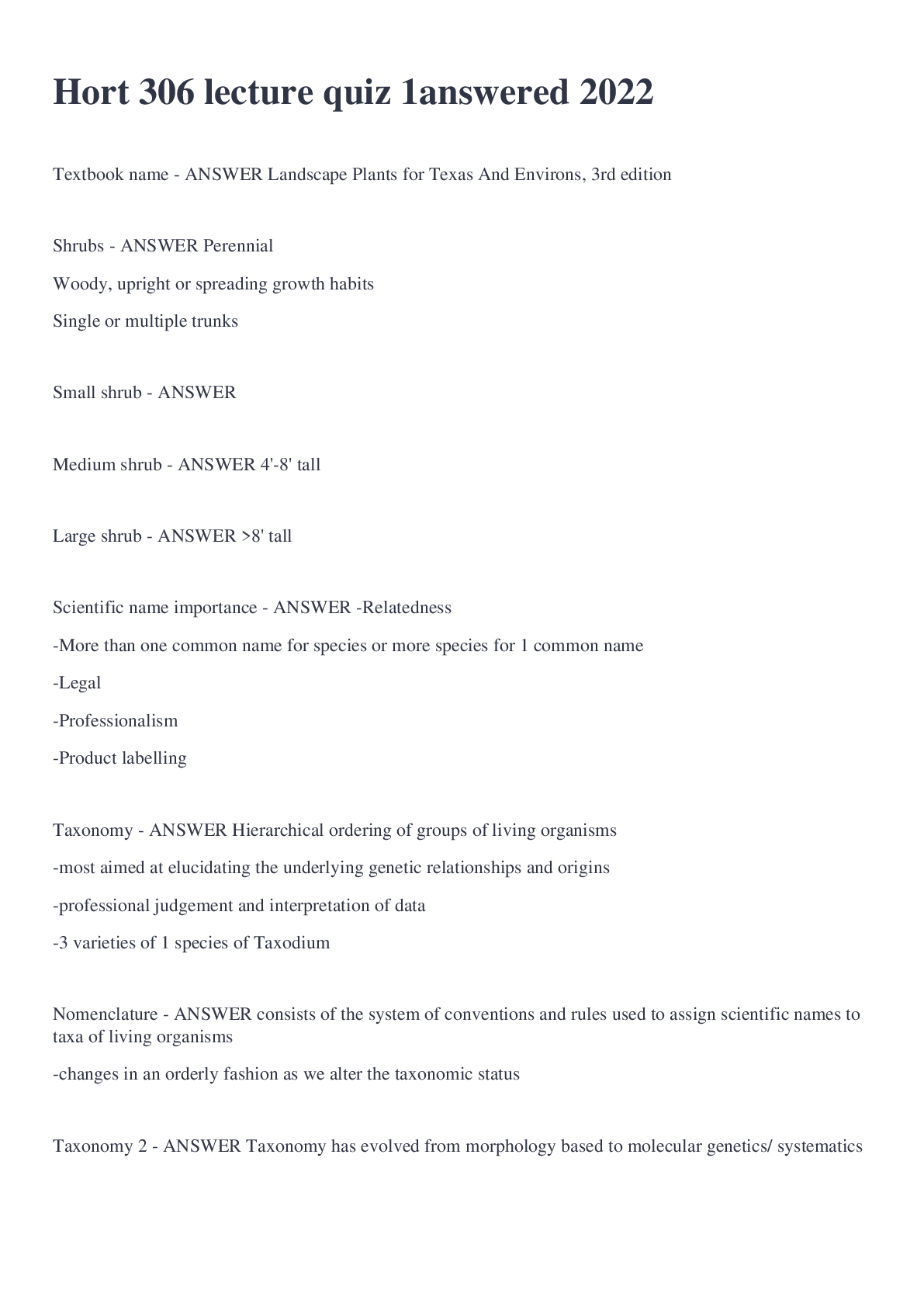Occupational Therapy > QUESTIONS & ANSWERS > Dementia Exam Questions and Answers (All)
Dementia Exam Questions and Answers
Document Content and Description Below
Define dementia - ANSWER - Dementia is a syndrome and not a single disease entity. - It refers to progressive impairment of higher cortical functions, including memory, orientation, comprehension, c... alculation, learning capacity, language and judgement. - The dominant symptoms depend on the brain region most affected by disease. - Often it is accompanied, or preceded by, deterioration in emotional control, social behaviour or motivation. - In the initial stages, there are often focal cortical deficits, and as it progresses it is eventually associated with diffuse involvement of both cerebral hemispheres. Difference between dementia and delirium - ANSWER - The patient is often alert in the early and middle stages of the disease. - This is in contrast to delirium (acute confusional state), in which alteration of level of consciousness is a defining feature. Dementia vs. delirum vs. depression - ANSWER Epidemiology of dementia - ANSWER - The most common causes of dementia are Alzheimer's disease and vascular dementia, and these are predominantly diseases of the elderly. - 50-70 years old prevalence is 1% - 90years old prevalence is 50% What determines rate of decline in dementia? - ANSWER The cause. • Alzheimer's disease: slowly progressive over years • Vascular dementia: repeated large vessel occlusion causes stepwise deterioration, whereas small vessel disease causes a progressive decline without steps. Both often coexist • Prion disease or a CNS vasculitis: progressive over months • Encephalitis: over days to weeks • It should be noted that all dementias tend to be accelerated by a change in environment, intercurrent infection or surgical procedures. Symptoms of dementia - ANSWER - The earliest symptoms correlate with area of the brain first affected - As disease spreads through the brain, other symptoms develop. - Therefore, in Alzheimer's disease, recent memory impairment is the most common initial complaint and reflects early degeneration of the hippocampal areas. - In frontotemporal dementia, changes in personality can often be reported, reflecting early involvement of frontal structures Ix - ANSWER - Routine bloods: TFT, B12, folate, syphilis - Special (to screen rarer causes of dementia) metabolic disorders (ex. wilson's), leucodystrophies, HIV ('AIDS dementia' ), vasculitis and inflammatory diseases, limbic encephalitis. - LP in those under 65 years to exclude treatable causes of dementia However... - The CSF levels of tau (increased) and a beta 42 (decreased) can sometimes help with the diagnosis of Alzheimer's disease, but tend to be measured only in specialist centres. - Similarly, elevated S100 and protein 14-3-3 are supportive of a diagnosis of CJD. - Neuropsychometry - EEG: may find widespread delta waves, especially in early alzheimers. Alzheimers also shows loss of responsive alpha rhythm (as opposed to FTLD). Periodic complexes may indicate CJD. Imaging - ANSWER - Typically, variable degrees of cerebral atrophy with enlarged ventricles are seen with most forms of dementia. - However, MRI can also be used to allow assessment of signal change and patterns of atrophy consistent with specific forms of dementia. - For example increased T2 signal in the thalami is characteristic of variant Creutzfeldt- Jakob disease (CJD). - Bilateral hippocampal and temporal lobe atrophy is seen in Alzheimer's disease and asymmetrical anterior hippocampal, amygdala and temporal lobe atrophy is seen in frontotemporal lobar degeneration (FTLD). - In cerebrovascular disease imaging can demonstrate multiple infarcts or significant small vessel disease. genetic testing - ANSWER - Huntington mutation: Huntington's chorea - Alzheimer's disease: amyloid precursor protein (APP), presenilin 1 and 2, and apoliprotein E4 mutations familial - Creutzfeldt- Jakob disease: prion protein gene mutation - FTLD: tau, progranulin and C9orf72 mutations. Epidemiology of Alzheimer's - ANSWER - Alzheimer's disease is the most common cause of dementia in the developed world. - There are approximately 500 000 cases in the UK at any one time. - It is rarely seen in persons under the age of 45 years, except in familial cases, and the incidence increases dramatically with age, especially in patients over 70 years. . Genetics of Alzheimer's - ANSWER - Familial Alzheimer's disease is rare. - Mutations in the amyloid precursor protein (APP) gene on chromosome 21, presenilin 1 and 2 genes is associated with young onset AD. - There is also an association of late-onset disease with the apolipoprotein E4 genotype. - Individuals with Down syndrome develop the full neuropathological and clinical changes of Alzheimer's disease by their fourth to fifth decade of life, probably as a consequence of the excessive APP produced by a 50% increase in gene dosage due to the extra chromosome 21 Pathophysiology of Alzheimer's - ANSWER - presence of extracellular amyloid plaques and intracellular neurofibrillary tangles in the brain. - The plaques consist of dystrophic neurites clustered round a core of b -amyloid protein, which is derived from the larger precursor protein, APP. - Amyloid can also be deposited in cerebral blood vessels, leading to amyloid angiopathy. - Neurofibrillary tangles are derived from the micro-tubule-associated protein tau, which is in an abnormally hyperphosphorylated state and causes protein aggregation. - The majority of the pathology affects the hippocampus, temporal and parietal lobes. - Typically, the primary motor and sensory cortex are spared. [Show More]
Last updated: 2 years ago
Preview 1 out of 7 pages
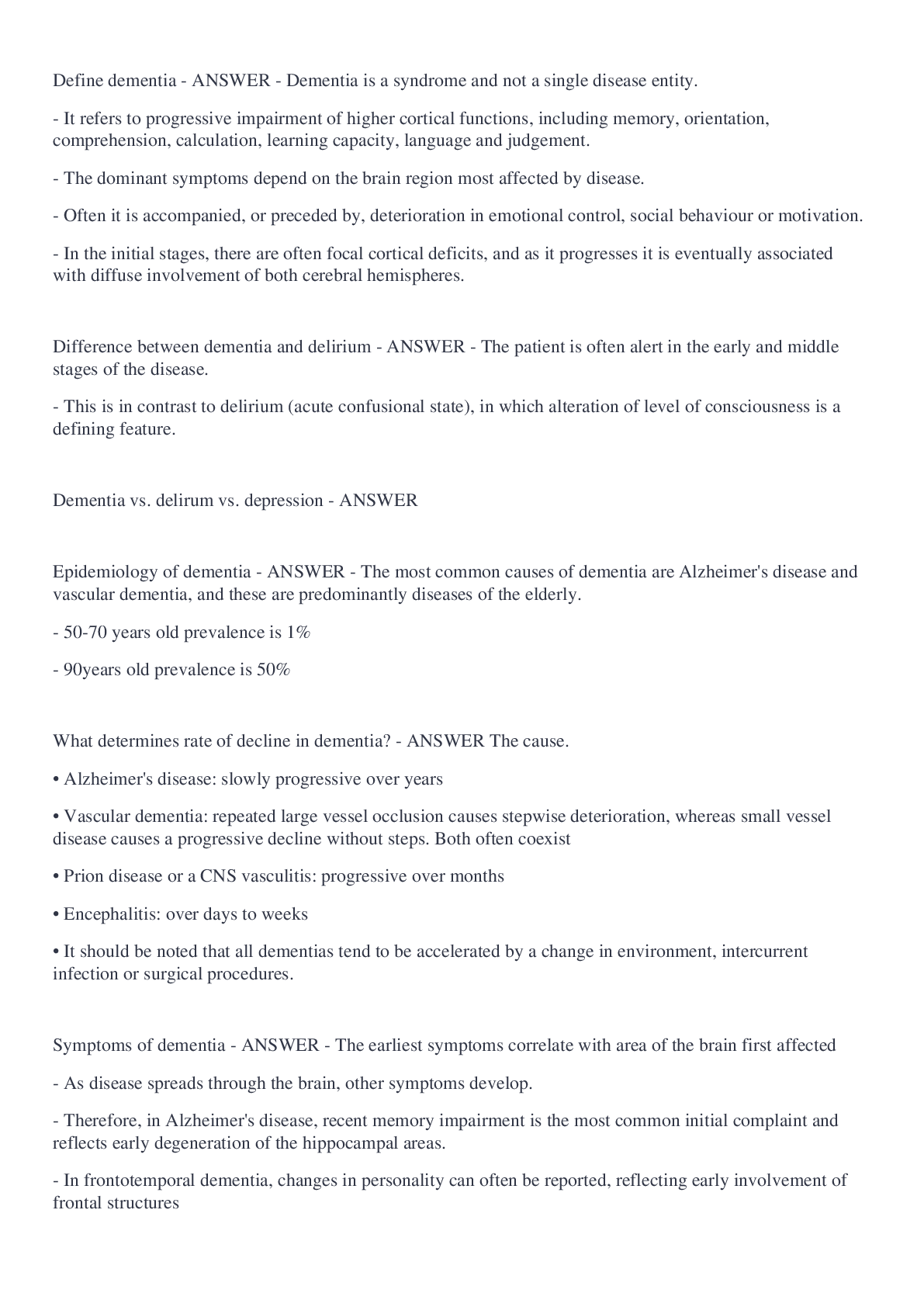
Buy this document to get the full access instantly
Instant Download Access after purchase
Buy NowInstant download
We Accept:

Reviews( 0 )
$7.00
Can't find what you want? Try our AI powered Search
Document information
Connected school, study & course
About the document
Uploaded On
Jul 28, 2022
Number of pages
7
Written in
Additional information
This document has been written for:
Uploaded
Jul 28, 2022
Downloads
0
Views
118


